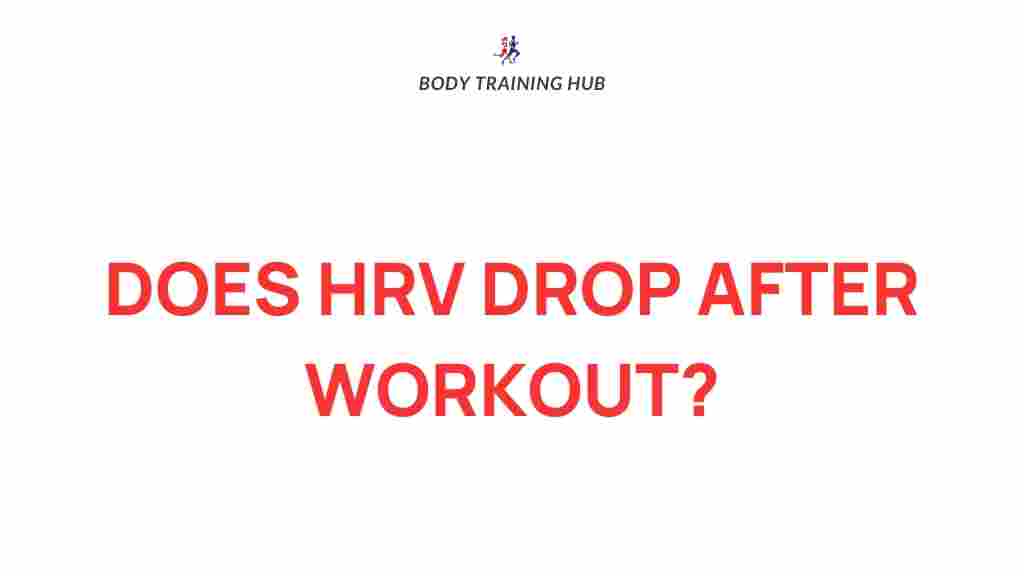Unveiling the Post-Workout Mystery: Does HRV Decrease?
Understanding the relationship between exercise and heart rate variability (HRV) is essential for anyone looking to optimize their fitness and recovery. As a key indicator of your body’s ability to recover from exercise, HRV can provide invaluable insights into your health and fitness journey. But does HRV decrease after a workout? In this article, we’ll explore the intricacies of HRV, its significance in post-workout recovery, and how you can effectively monitor this vital data.
What is Heart Rate Variability (HRV)?
Heart rate variability refers to the variation in time between each heartbeat. It is a crucial measure of the autonomic nervous system’s function and reflects the body’s ability to respond to stressors, including physical activity. A higher HRV generally indicates better cardiovascular fitness and a greater ability to adapt to stress, while a lower HRV can signal fatigue or overtraining.
Why Monitor HRV?
Monitoring HRV can provide insights into your overall health and fitness. Here are some reasons why tracking HRV is beneficial:
- Recovery Assessment: HRV is a reliable indicator of how well your body is recovering from workouts.
- Stress Management: Understanding your HRV can help you manage stress levels effectively.
- Performance Optimization: Athletes can use HRV data to tailor their training regimens for peak performance.
- Health Monitoring: Changes in HRV can indicate potential health issues that may require attention.
The Connection Between Exercise and HRV
During and after exercise, your body undergoes a series of physiological changes. These changes can significantly affect HRV. When you engage in physical activity, your sympathetic nervous system becomes more active, which can lead to a temporary decrease in HRV. This is a natural response as your body works to meet the demands of exercise.
Does HRV Decrease Post-Workout?
Yes, HRV typically decreases immediately after a workout. However, the extent of this decrease can vary based on several factors:
- Type of Exercise: High-intensity workouts generally lead to a more significant decrease in HRV compared to low-intensity activities.
- Exercise Duration: Longer sessions may result in a more pronounced drop in HRV.
- Individual Fitness Level: Well-trained athletes may experience less of a drop in HRV compared to less conditioned individuals.
Understanding the Recovery Process
Post-exercise, your body enters a recovery phase, where HRV begins to increase again as the parasympathetic nervous system activates. This process is crucial for effective recovery and can take anywhere from a few hours to several days, depending on the intensity of the workout and your overall fitness level.
To optimize recovery and improve HRV, consider the following:
- Hydration: Ensure you are well-hydrated before, during, and after your workouts.
- Nutrition: Fuel your body with nutritious foods to aid recovery.
- Sleep: Prioritize quality sleep to allow your body to repair and rejuvenate.
Step-by-Step Process for Monitoring HRV
Monitoring HRV can be done through various devices and apps that track heart rate data. Here’s a step-by-step guide to effectively monitor your HRV:
Step 1: Choose the Right Device
Select a wearable device or app that tracks HRV accurately. Popular options include:
- Fitness trackers (e.g., Fitbit, WHOOP)
- Smartwatches (e.g., Apple Watch, Garmin)
- Dedicated HRV monitors (e.g., Polar H10)
Step 2: Establish a Baseline
Before starting any training program, take daily HRV readings at the same time each day, preferably in the morning upon waking. This will help you establish a baseline for your HRV.
Step 3: Track Your Data
Record your HRV data over time to identify trends and variations. Look for patterns related to your workouts, stress levels, and recovery.
Step 4: Analyze the Data
Use the data to assess your recovery status. If your HRV is consistently low after workouts, consider adjusting your training intensity or incorporating more recovery protocols.
Step 5: Adjust Your Training
Based on your HRV readings, modify your training regimen. If your HRV remains low, it may be a sign to incorporate rest days or lower-intensity workouts.
Troubleshooting HRV Monitoring
While monitoring HRV can be straightforward, you may encounter some challenges. Here are troubleshooting tips:
1. Inconsistent Readings
If your HRV readings fluctuate significantly, consider the following:
- Ensure you are using the device correctly and consistently.
- Monitor other factors like sleep, hydration, and stress that may affect readings.
2. Low HRV Concerns
Consistently low HRV can signal overtraining or inadequate recovery. Address this by:
- Incorporating rest days into your training schedule.
- Improving nutrition and hydration.
- Practicing stress-reduction techniques like meditation or yoga.
3. Understanding Data Interpretation
Not all HRV data is created equal. Familiarize yourself with how to interpret your specific device’s readings and consult with a healthcare professional if needed.
Conclusion
In conclusion, understanding the relationship between post-workout activities and heart rate variability is crucial for optimizing fitness and recovery. While HRV does typically decrease immediately following exercise, the subsequent recovery phase is vital for improving overall health. By monitoring your HRV data, you can make informed decisions about your training regimen, enhance recovery, and ultimately achieve your fitness goals.
For more information on heart rate variability and fitness, check out this external resource. Additionally, visit our site for more tips on optimizing your exercise and recovery strategies.
This article is in the category Strength & Recovery and created by BodyTraining Team
